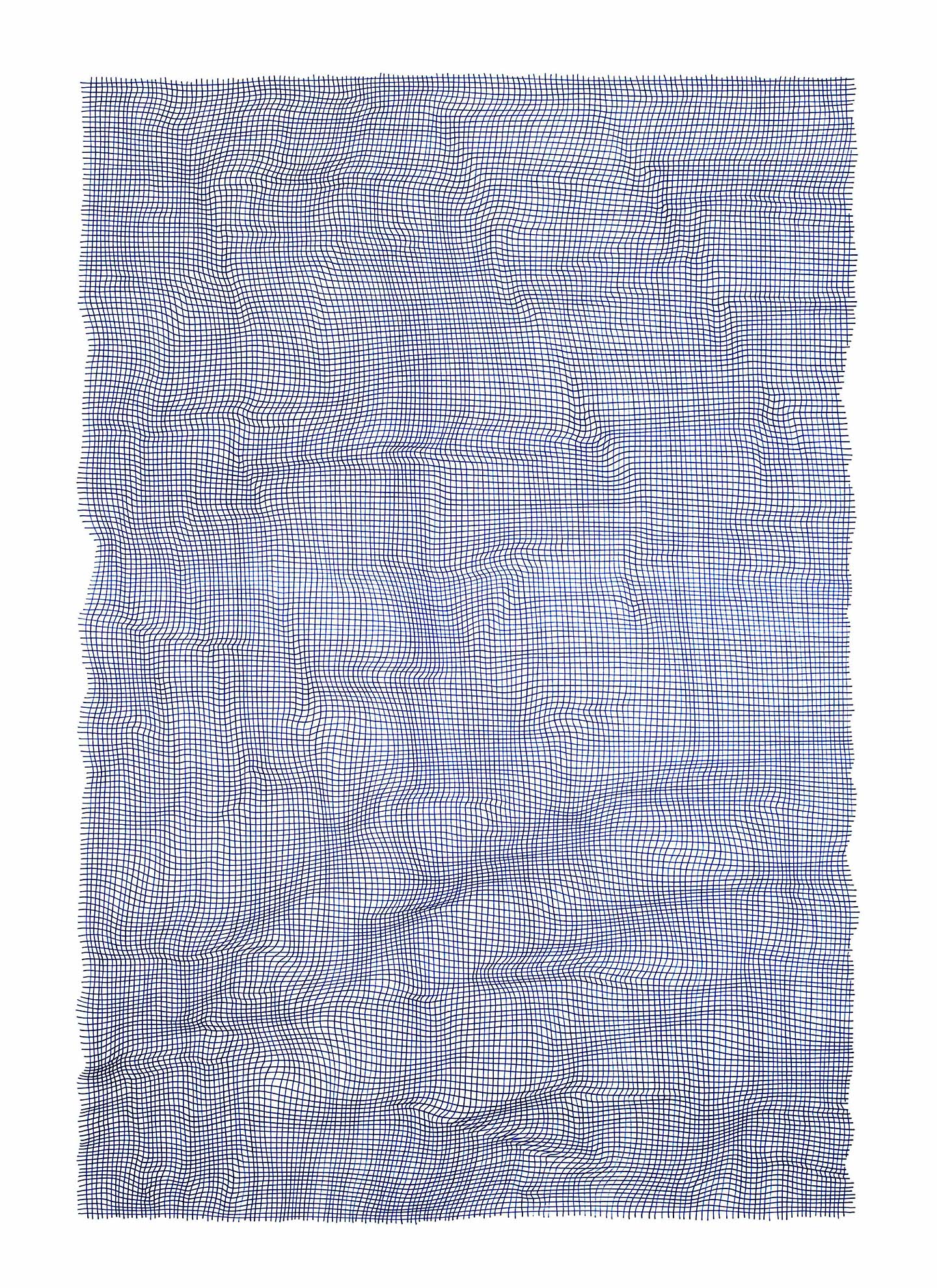- Apply
- Visit
- Request Info
- Give
Published on August 07, 2023
Karin Schaefer
When I was in art school in Boston 1991 I had a friend who worked as a Sol Lewitt drafter for an exhibition at the Addison Gallery of American Art, Andover Mass. I was intrigued to learn about the instructions Lewitt gave and that any number of different drafters could make the works by following those instructions. I was especially drawn to works like Wall Drawing #123, 1972 that would necessarily be different every time it was
made.
Instructions for Wall Drawing #123, 1972
Graphite on wall
Copied lines. The first drafter draws a not straight vertical line as long as possible. The second drafter draws a line next to the first one, trying to copy it. The third drafter does the same, as do as many drafters as possible. Then the first drafter, followed by the others, copies the last line drawn until both ends of the wall are reached.
I loved this drawing and the naturally varied heights of the lines based on the individual drafter’s reach. I found it so personal, physical and pure. The hand of the makers, though not Lewitt’s, were visible, and Lewitt’s conceptual structure was clearly there for all to see. Some 15 years later I saw this work again at Dia Beacon along with so many of Lewitt’s other wall drawings, and I found it as resonant as I had the first time I saw it. In 2006 I started a meditation practice that prompted a new body of work for me. Every day after I meditate I make a small drawing in a book that maps the light and forms I see when my eyes are closed. Then in the studio I draw from these books to make secondary drawings and paintings based on the original source material of a particular meditation on a particular day. Intricate linear networks collectively register shifting thought forms that radiate outward or wind inward, fall or ascend in an indeterminate space. The individual drawings function as discrete pieces but I also see them as collectively registering a visual vocabulary of the mind.
The Warp and Weft drawings that came out of this practice are an ongoing series. I start by drawing a freehand vertical line, then a second vertical line that is close to the first and follows any of the natural wobble or contours that may be in the first line. I repeat this until I get to the other side of the page, then do the same in the other direction making horizonal lines. These works trace the first line, whatever tension is in my hand that day, and the rest of the lines are all in relation to that first line.
In making these works I was thinking about them as a record drawn from my meditation practice, and about perception and the interaction of each vertical and horizontal line. It was several years into the series, that I made the connection that this body of work was also informed by experiencing Lewitt’s wall drawings and their instructions. Lewitt’s work had influenced both my thinking and my process in conscious and unconscious ways. I had been making work where my own rules and parameters were consistent but the outcome was always slightly different. I realized that this series was very much in the lineage of Sol Lewitt’s work and in particular that one drawing, #123 that I had so admired in my early twenties.
Karin Schaefer about Sol LeWitt


